Ventsi Iotoff lives in the shadow of the Acropolis — that quintessential manifestation of the perfect integration of civilization’s arts and sciences. This iconic structure has weighed upon him as much as much it has inspired him for many years, including the last two, during which he created this art book. Iotoff is versatile as a painter, printmaker, sculptor, architect, and creator of urban environments. Presented here is a collection of intriguing visual concepts, fueled by decades of creative drive that acknowledge that brilliant natural merger of art and science that the Ancient Greeks knew so well.
There is nothing static about his imagery. His imagination is constantly at play, breaking down old visual concepts, reassembling the fragments, and injecting mysterious glyphs that could well be attributed to civilizations past or future — from our Earth or from distant galaxies as yet undiscovered. His paintings and collages can dominate a room. And many are monumental in size — some up to sixteen meters long. Some seem like time capsules containing elements of the human race in search of extraterrestrial life from the macrocosm or the microcosm. “I am coming back from a journey into the universe,” he says. In short, Iotoff’s mark making speaks of the humanity inherent in striving to communicate universal concepts. Yet, his paintings and prints also exhibit the naïveté and childlike playfulness of works by Paul Klee. It’s this sense of humanism, even sensuality, which we feel that is omnipresent in his works, no matter how unorthodox they may first appear. Indeed, he offers a clue with comments like, “I have been creating facets of echo languages.” One example of those echoes is found in his elegy to the victims of Japan’s disastrous earthquake of 2011 — The 9.0 Faces of Egelados — a series of long horizontal works printed on paper using a seismometer. “There is no art,” he says, “Only the personal agony for it.”
In the Bookworm series, Iotoff has passed thousands of book pages through a shredder and utilized the production of myriad tangled strips as his sculptural medium in creating these delightfully curious biomorphic forms. It is as if the bookworm has shredded pages of civilization’s knowledge, digested them, and reformed them in its own image. Civilizations destroyed and created anew.
Iotoff is clearly in his most natural sphere as a visionary sculptor of architectonic forms and spaces while remaining highly sensitive in his anticipation of the human experience. Like the great urban designer, Le Corbusier, he can envisage practical human reaction to, and interaction with, his creations. He is the architect’s greatest ally, insisting that interiors and exteriors be given the opportunity to be compelling. Perhaps it is the Parthenon’s perfect assimilation with its environment that has inspired him. The strength of his vision is most evident in his projects for construction of the subway stations in Athens for the Opera and for Omenia — both brilliant examples of how the play of light, movement, and glyphs can bring vigor and delight to an aspect of the urban environment that is all too-often a sterile one.
Even pondering the concept of the simple structural column, this series applies probing energy to raise anew the classic question, “Does form follow function, or function follow form?” His building facades, too, are innovative, promising new life for buildings, and even entire plazas that can finally relate intimately to their skyscrapers. One project shows the skin of a tall building changing as the day passes. Iotoff also fertilizes a building’s surrounding spaces that could otherwise have become predictably barren. He invites us to play in these spaces, to experience them with wonder.
In short, Iotoff’s imaginative approach to both art and architecture always results in a fresh hybrid vigor of form, light, color, and composition that together that engage our attention. Unlike Andy Warhol’s consumer images appropriated from popular culture, Iotoff’s images make us linger and explore. Like the Parthenon, they inspire us.
Visionary Sculptor
-
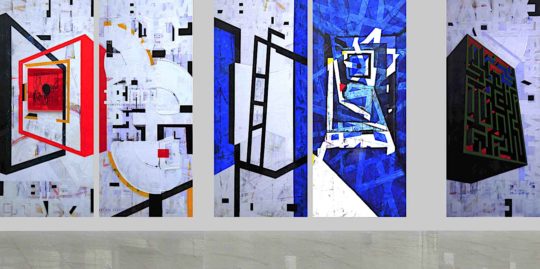 DETAILS
DETAILSA World of Occurrances (Private Collection, Germany), 2015
148 x 54 inches (375.92 x 137.16 cm) -
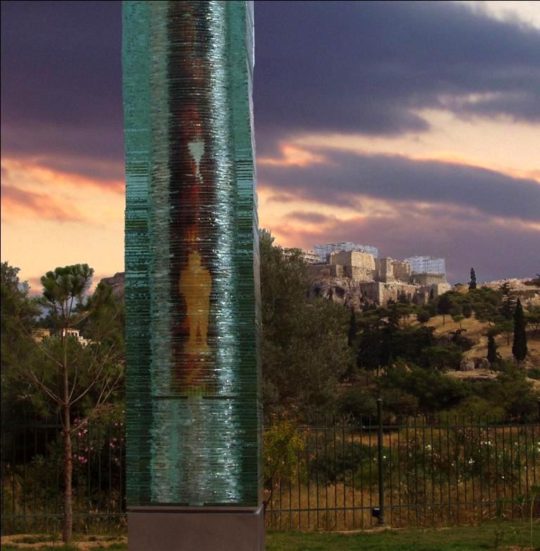 DETAILS
DETAILSColumn for the Olympiad, Athens, 2004
138 x 19.6 inches (350.52 x 49.78 cm) -
 DETAILS
DETAILSColumn for the Olympiad, Athens, 2004
138 x 19.6 inches (350.52 x 49.78 cm) -
 DETAILS
DETAILSColumn for the Olympiad, Athens, 2004
19.6 x 137.8 inches (49.78 x 350.01 cm) -
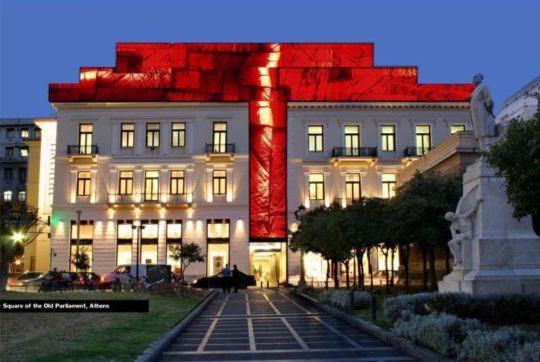 DETAILS
DETAILSDigital Imposition, Old Parliament, Athens, 2013
462 x 1008 inches (1 x 2 cm) -
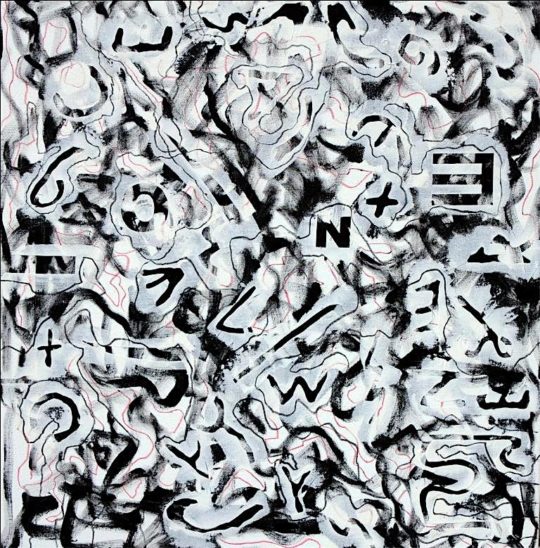 DETAILS
DETAILSFree Will In Black and White, 2013
23.6 x 23.6 inches (59.94 x 59.94 cm) -
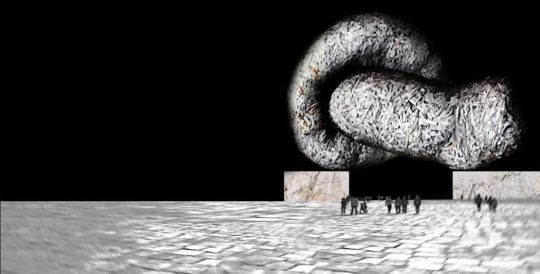 DETAILS
DETAILSMaquette for Bookworm Monument, 2013
2376 x 1728 inches (6 x 4 cm) -
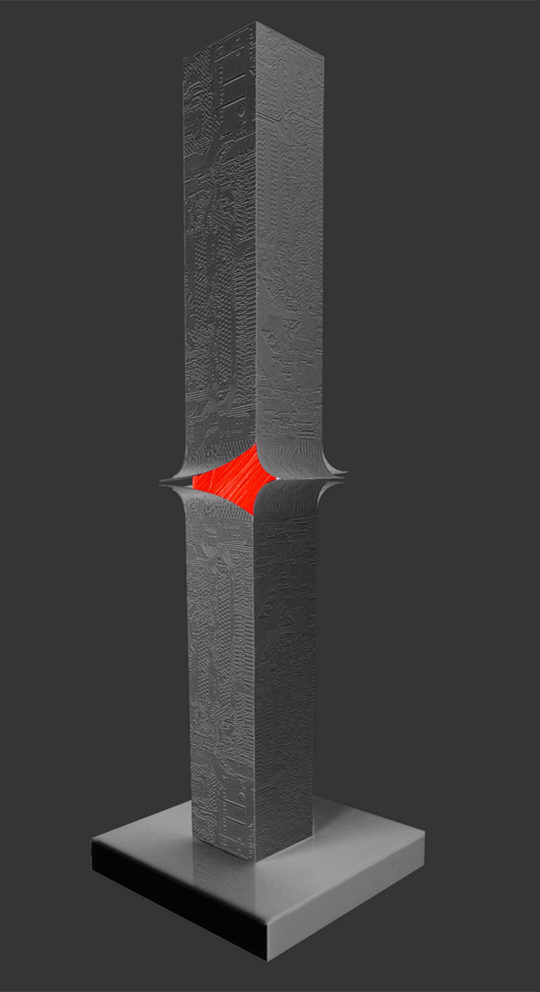 DETAILS
DETAILSMaquette for Column, Athens, 2000
336 x 48 inches (853.44 x 121.92 cm) -
 DETAILS
DETAILSMaquette for Opera Subway Station, Athens, 2000
144 x 684 inches (365.76 x 1 cm) -
 DETAILS
DETAILSNorth Pole Investigation Series, 2014
19.6 x 19.6 inches (49.78 x 49.78 cm) -
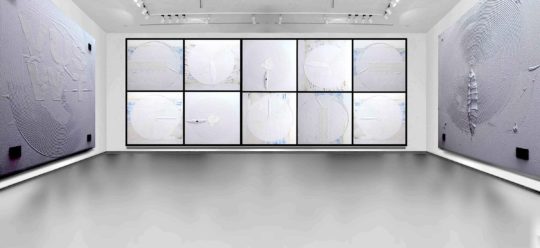 DETAILS
DETAILSNorth Pole Investigation Series, 2014
96 x 240 inches (243.84 x 609.6 cm) -
 DETAILS
DETAILSNorth Pole Investigation Series, 2014
19.6 x 19.6 inches (49.78 x 49.78 cm) -
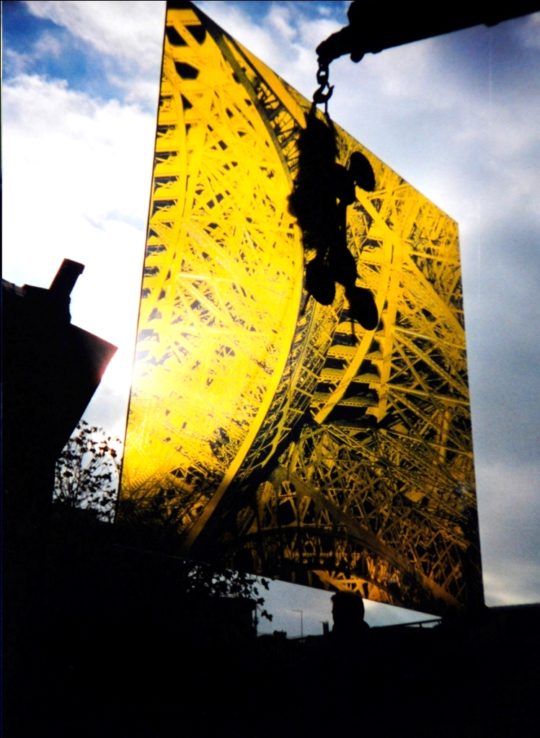 DETAILS
DETAILSOmonia Subway Station, Athens (crane lifting), 2001
118 x 118 inches (299.72 x 299.72 cm) -
 DETAILS
DETAILSOmonia Subway Station, Athens (crew assembling), 2001
118 x 118 inches (299.72 x 299.72 cm) -
 DETAILS
DETAILSOmonia Subway Station, Athens (installation), 2001
118 x 118 inches (299.72 x 299.72 cm) -
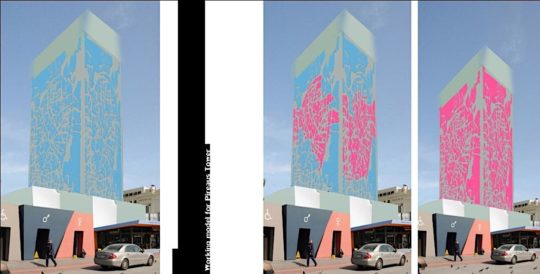 DETAILS
DETAILSPireaus Tower Competition, Athens, 2010
2640 x 1200 inches (6 x 3 cm) -
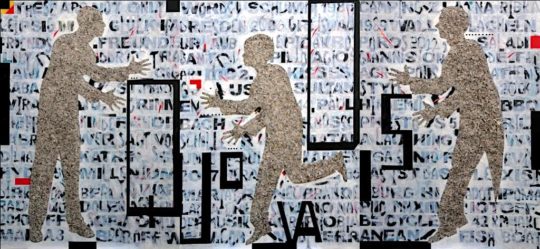 DETAILS
DETAILSQuo Vadis, 2013
70.8 x 141.7 inches (179.83 x 359.92 cm) -
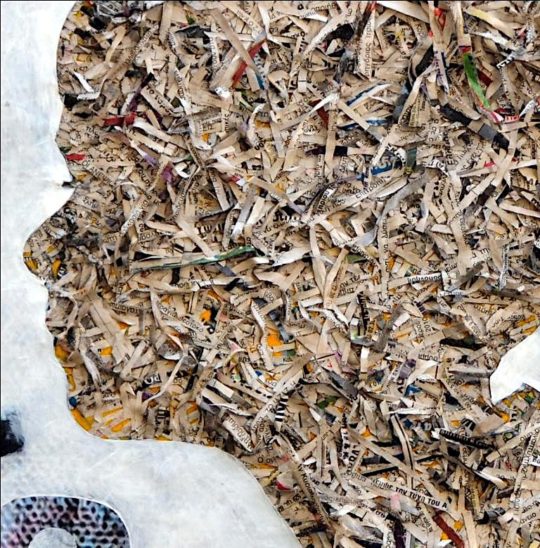 DETAILS
DETAILSQuo Vadis (detail), 2013
70.8 x 141.8 inches (179.83 x 360.17 cm) -
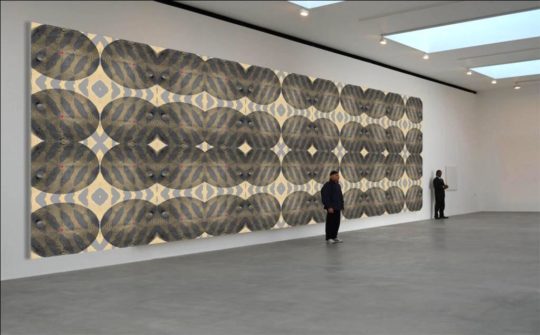 DETAILS
DETAILSUntitled Mural, Athens, 2011
145 x 425 inches (368.3 x 1 cm) -
 DETAILS
DETAILSUntitled, Athens, 2010
75 x 200 inches (190.5 x 508 cm)
-
 DETAILS
DETAILSA World of Occurrances (Private Collection, Germany), 2015
148 x 54 inches (375.92 x 137.16 cm) -
 DETAILS
DETAILSColumn for the Olympiad, Athens, 2004
138 x 19.6 inches (350.52 x 49.78 cm) -
 DETAILS
DETAILSColumn for the Olympiad, Athens, 2004
138 x 19.6 inches (350.52 x 49.78 cm) -
 DETAILS
DETAILSColumn for the Olympiad, Athens, 2004
19.6 x 137.8 inches (49.78 x 350.01 cm) -
 DETAILS
DETAILSDigital Imposition, Old Parliament, Athens, 2013
462 x 1008 inches (1 x 2 cm) -
 DETAILS
DETAILSFree Will In Black and White, 2013
23.6 x 23.6 inches (59.94 x 59.94 cm) -
 DETAILS
DETAILSMaquette for Bookworm Monument, 2013
2376 x 1728 inches (6 x 4 cm) -
 DETAILS
DETAILSMaquette for Column, Athens, 2000
336 x 48 inches (853.44 x 121.92 cm) -
 DETAILS
DETAILSMaquette for Opera Subway Station, Athens, 2000
144 x 684 inches (365.76 x 1 cm) -
 DETAILS
DETAILSNorth Pole Investigation Series, 2014
19.6 x 19.6 inches (49.78 x 49.78 cm) -
 DETAILS
DETAILSNorth Pole Investigation Series, 2014
96 x 240 inches (243.84 x 609.6 cm) -
 DETAILS
DETAILSNorth Pole Investigation Series, 2014
19.6 x 19.6 inches (49.78 x 49.78 cm) -
 DETAILS
DETAILSOmonia Subway Station, Athens (crane lifting), 2001
118 x 118 inches (299.72 x 299.72 cm) -
 DETAILS
DETAILSOmonia Subway Station, Athens (crew assembling), 2001
118 x 118 inches (299.72 x 299.72 cm) -
 DETAILS
DETAILSOmonia Subway Station, Athens (installation), 2001
118 x 118 inches (299.72 x 299.72 cm) -
 DETAILS
DETAILSPireaus Tower Competition, Athens, 2010
2640 x 1200 inches (6 x 3 cm) -
 DETAILS
DETAILSQuo Vadis, 2013
70.8 x 141.7 inches (179.83 x 359.92 cm) -
 DETAILS
DETAILSQuo Vadis (detail), 2013
70.8 x 141.8 inches (179.83 x 360.17 cm) -
 DETAILS
DETAILSUntitled Mural, Athens, 2011
145 x 425 inches (368.3 x 1 cm) -
 DETAILS
DETAILSUntitled, Athens, 2010
75 x 200 inches (190.5 x 508 cm)
No Press releases found.
No News found.
No Events Found.

